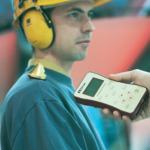Workplace Noise Exposure and the Queensland Noise Legislation
 Workplace noise-induced hearing loss is still a major compensable disease in Queensland workplaces. Noise-induced hearing loss is caused by excessive noise in the workplace. A worker may have an entitlement to compensation for hearing loss if their employment was a significant contributing factor causing the loss of hearing.
Workplace noise-induced hearing loss is still a major compensable disease in Queensland workplaces. Noise-induced hearing loss is caused by excessive noise in the workplace. A worker may have an entitlement to compensation for hearing loss if their employment was a significant contributing factor causing the loss of hearing.
The Queensland Work Health and Safety Act 2011 places responsibility for managing workers health and safety risk on the ‘persons conducting a business or undertaking’ (PCBU). The WHS Regulations 2011 detail responsibilities for the PCBU to ensure noise exposure does not exceed the exposure standard and to provide hearing tests for certain workers.
In Queensland noise is prescribed in Part 4.1 of the Work Health and Safety Regulation 2011. For this standard excessive noise is a level of noise above an 8-hour equivalent continuous A-weighted sound pressure level (LAeq,8h) of 85dB(A) and a C-weighted peak sound pressure level exceeding 140 dB(C). The LAeq,8h represents a steady noise which, if averaged over 8 hours, equates to a daily noise exposure.
It is important to understand that this standard should not be considered a safe exposure level, where over a period of time there would be no damage to someone’s hearing or potential for other health effects. Rather, the standard of 85 dB (A) is considered to be an ‘acceptable’ risk for the working population.
For instance, research indicates that after an exposure to 85 dB (A) over a 40 year working life, 74% of exposed males can expect to experience a 6% hearing disability while 47% of females can expect to experience a 6% hearing disability.
The implication for the workers is that, even with the current noise exposure standard, a large percentage of the workforce can expect to have incurred significant hearing loss by the time they cease working. Therefore, it is imperative that noise exposure is kept below the exposure standard.
The Managing Noise and Preventing Hearing Loss at Work Code of Practice 2011 prescribe ways of preventing or minimising risks to workers from exposure to excessive noise at a workplace.
Effective noise management requires assessment of noise levels and workers exposure, engineering noise control, personal protective equipment, audiometric testing (hearing tests) and worker training.
A noise assessment may be required to quantify the noise exposure risk to workers. Workplace Noise Assessments should be conducted by a competent person (occupational hygienist) to meet the requirements of AS1269.1: 2005 Measurements and Assessment of Noise Immission and Exposure. .
In most situations the noise assessment involves a combination of personal exposure measurements and noise level measurements for plant and equipment. Where required noise contour maps can be developed.
The period between noise assessments should be determined by management in consultation with workers through consultative processes. The noise assessment should be repeated at intervals not exceeding five years or whenever there is a significant change to the conditions that affect exposure.
For information on workplace noise monitoring click here.
For information on plant noise assessments click here.
For further information on how we can assist you with noise assessment services call our office or use our contacts page to forward a request for further information.










